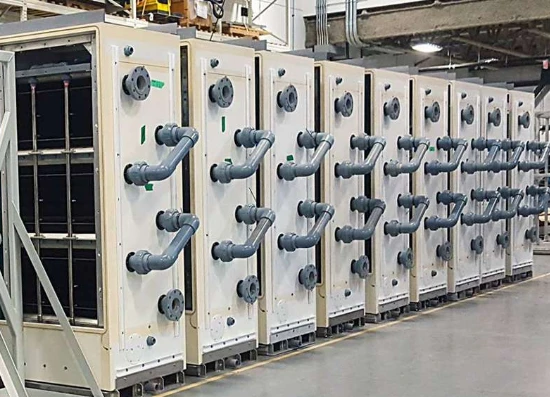
-
 Afrikaans
Afrikaans -
 Albanian
Albanian -
 Amharic
Amharic -
 Arabic
Arabic -
 Armenian
Armenian -
 Azerbaijani
Azerbaijani -
 Basque
Basque -
 Belarusian
Belarusian -
 Bengali
Bengali -
 Bosnian
Bosnian -
 Bulgarian
Bulgarian -
 Catalan
Catalan -
 Cebuano
Cebuano -
 China
China -
 China (Taiwan)
China (Taiwan) -
 Corsican
Corsican -
 Croatian
Croatian -
 Czech
Czech -
 Danish
Danish -
 Dutch
Dutch -
 English
English -
 Esperanto
Esperanto -
 Estonian
Estonian -
 Finnish
Finnish -
 French
French -
 Frisian
Frisian -
 Galician
Galician -
 Georgian
Georgian -
 German
German -
 Greek
Greek -
 Gujarati
Gujarati -
 Haitian Creole
Haitian Creole -
 hausa
hausa -
 hawaiian
hawaiian -
 Hebrew
Hebrew -
 Hindi
Hindi -
 Miao
Miao -
 Hungarian
Hungarian -
 Icelandic
Icelandic -
 igbo
igbo -
 Indonesian
Indonesian -
 irish
irish -
 Italian
Italian -
 Japanese
Japanese -
 Javanese
Javanese -
 Kannada
Kannada -
 kazakh
kazakh -
 Khmer
Khmer -
 Rwandese
Rwandese -
 Korean
Korean -
 Kurdish
Kurdish -
 Kyrgyz
Kyrgyz -
 Lao
Lao -
 Latin
Latin -
 Latvian
Latvian -
 Lithuanian
Lithuanian -
 Luxembourgish
Luxembourgish -
 Macedonian
Macedonian -
 Malgashi
Malgashi -
 Malay
Malay -
 Malayalam
Malayalam -
 Maltese
Maltese -
 Maori
Maori -
 Marathi
Marathi -
 Mongolian
Mongolian -
 Myanmar
Myanmar -
 Nepali
Nepali -
 Norwegian
Norwegian -
 Norwegian
Norwegian -
 Occitan
Occitan -
 Pashto
Pashto -
 Persian
Persian -
 Polish
Polish -
 Portuguese
Portuguese -
 Punjabi
Punjabi -
 Romanian
Romanian -
 Russian
Russian -
 Samoan
Samoan -
 Scottish Gaelic
Scottish Gaelic -
 Serbian
Serbian -
 Sesotho
Sesotho -
 Shona
Shona -
 Sindhi
Sindhi -
 Sinhala
Sinhala -
 Slovak
Slovak -
 Slovenian
Slovenian -
 Somali
Somali -
 Spanish
Spanish -
 Sundanese
Sundanese -
 Swahili
Swahili -
 Swedish
Swedish -
 Tagalog
Tagalog -
 Tajik
Tajik -
 Tamil
Tamil -
 Tatar
Tatar -
 Telugu
Telugu -
 Thai
Thai -
 Turkish
Turkish -
 Turkmen
Turkmen -
 Ukrainian
Ukrainian -
 Urdu
Urdu -
 Uighur
Uighur -
 Uzbek
Uzbek -
 Vietnamese
Vietnamese -
 Welsh
Welsh -
 Bantu
Bantu -
 Yiddish
Yiddish -
 Yoruba
Yoruba -
 Zulu
Zulu
frp cover
Understanding FRP Cover A Comprehensive Overview
Fiber Reinforced Polymer (FRP) cover is an innovative solution that has revolutionized the construction and building industry. It combines the strength of fibers with the versatility of polymer to create a material that is both lightweight and immensely strong. This article delves into the significance, applications, advantages, and challenges associated with FRP covers in modern construction.
What is FRP?
FRP is a composite material made up of a polymer matrix reinforced with fibers, typically carbon, glass, or aramid. Its composite structure gives it properties that far exceed those of traditional materials like steel and concrete. The use of FRP in construction has gained momentum due to its ability to provide durability, corrosion resistance, and higher strength-to-weight ratios.
The Role of FRP Cover in Construction
FRP covers are primarily used to protect underlying structures from environmental damage. Whether it’s a bridge, a building façade, or infrastructure exposed to harsh weather conditions, an FRP cover acts as a robust shield against moisture, UV radiation, and chemical exposure. This is particularly important in environments where traditional materials may corrode or degrade over time, leading to expensive repairs and maintenance.
Applications of FRP Covers
FRP covers find their application in various sectors, including
1. Infrastructure Bridges, tunnels, and coastal structures often utilize FRP covers to withstand harsh conditions and improve longevity.
2. Marine Structures Due to its excellent resistance to saltwater corrosion, FRP is extensively used in docks, piers, and other maritime facilities.
3. Commercial and Industrial Buildings FRP covers can be applied as cladding materials, improving aesthetic appeal while providing protection against environmental factors.
4. Reinforcement Systems FRP materials are often used in retrofitting older structures, enhancing their load-bearing capacity without adding significant weight.
frp cover

Advantages of FRP Covers
1. Lightweight One of the most significant advantages of FRP covers is their lightweight nature. This feature allows for easier handling and installation, reducing labor costs and time.
2. Corrosion Resistance Unlike steel, FRP does not corrode, making it an ideal choice for structures exposed to acidic or alkaline environments.
3. Design Flexibility FRP materials can be manufactured in various shapes, sizes, and colors, allowing architects and engineers to innovate in design without compromising functionality.
4. Durability and Strength FRP covers provide exceptional strength and can withstand extreme temperatures, impact, and loads, ensuring the longevity of the underlying structures.
5. Low Maintenance Costs Because of their resistance to environmental degradation, FRP covers require significantly less maintenance over their lifespan compared to traditional materials.
Challenges and Considerations
Despite its numerous advantages, the use of FRP covers is not without challenges. The initial cost of FRP materials can be higher than that of traditional options. Additionally, the application of FRP requires specialized knowledge and skills, which may necessitate additional training for construction teams.
Moreover, while the long-term benefits outweigh the initial investment, the perception of FRP as a relatively new technology may lead some stakeholders to be cautious in its adoption. It is essential for construction professionals to educate themselves on the properties and performance of FRP to make informed decisions.
Conclusion
In conclusion, FRP covers represent a significant advancement in construction materials, offering unique properties that cater to the demands of modern infrastructure. While challenges exist, the numerous benefits — including corrosion resistance, lightweight design, and low maintenance needs — make FRP an attractive option for builders and engineers alike. As the industry continues to evolve, embracing innovative materials like FRP will be crucial in creating durable, sustainable, and aesthetically pleasing structures for the future.
Latest news
-
Exploring the Benefits of Top Hammer Drifter Rods for Enhanced Drilling PerformanceNewsJun.10,2025
-
High-Precision Fiberglass Winding Machine for GRP/FRP Pipe Production – Reliable & Efficient SolutionsNewsJun.10,2025
-
FRP Pipes & Fittings for Shipbuilding - Corrosion-Resistant & LightweightNewsJun.09,2025
-
Premium FRP Flooring Solutions Durable & Slip-ResistantNewsJun.09,2025
-
Premium Fiberglass Rectangular Tanks Durable & Lightweight SolutionNewsJun.09,2025
-
Tapered Drill String Design Guide Durable Performance & UsesNewsJun.09,2025









